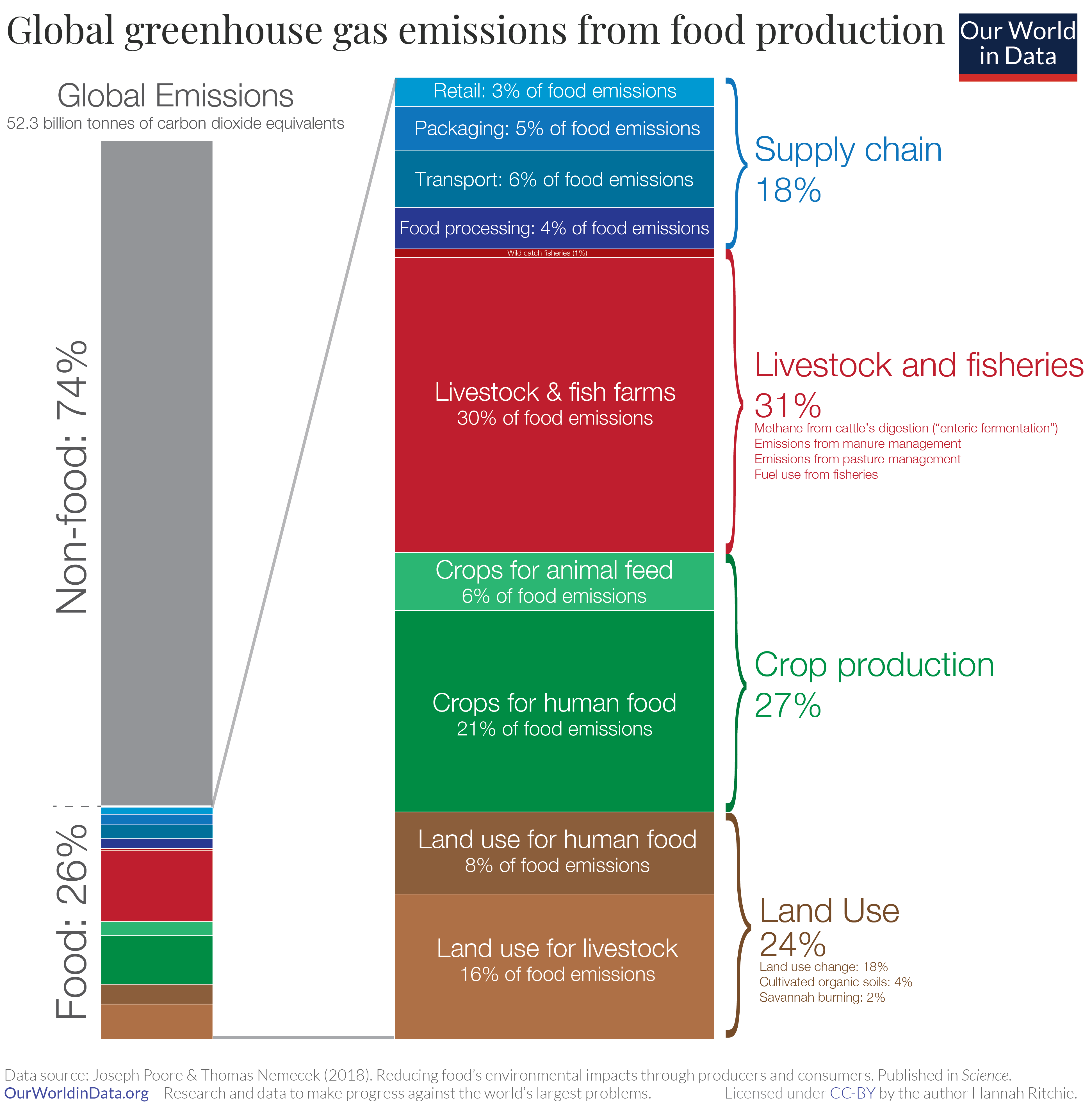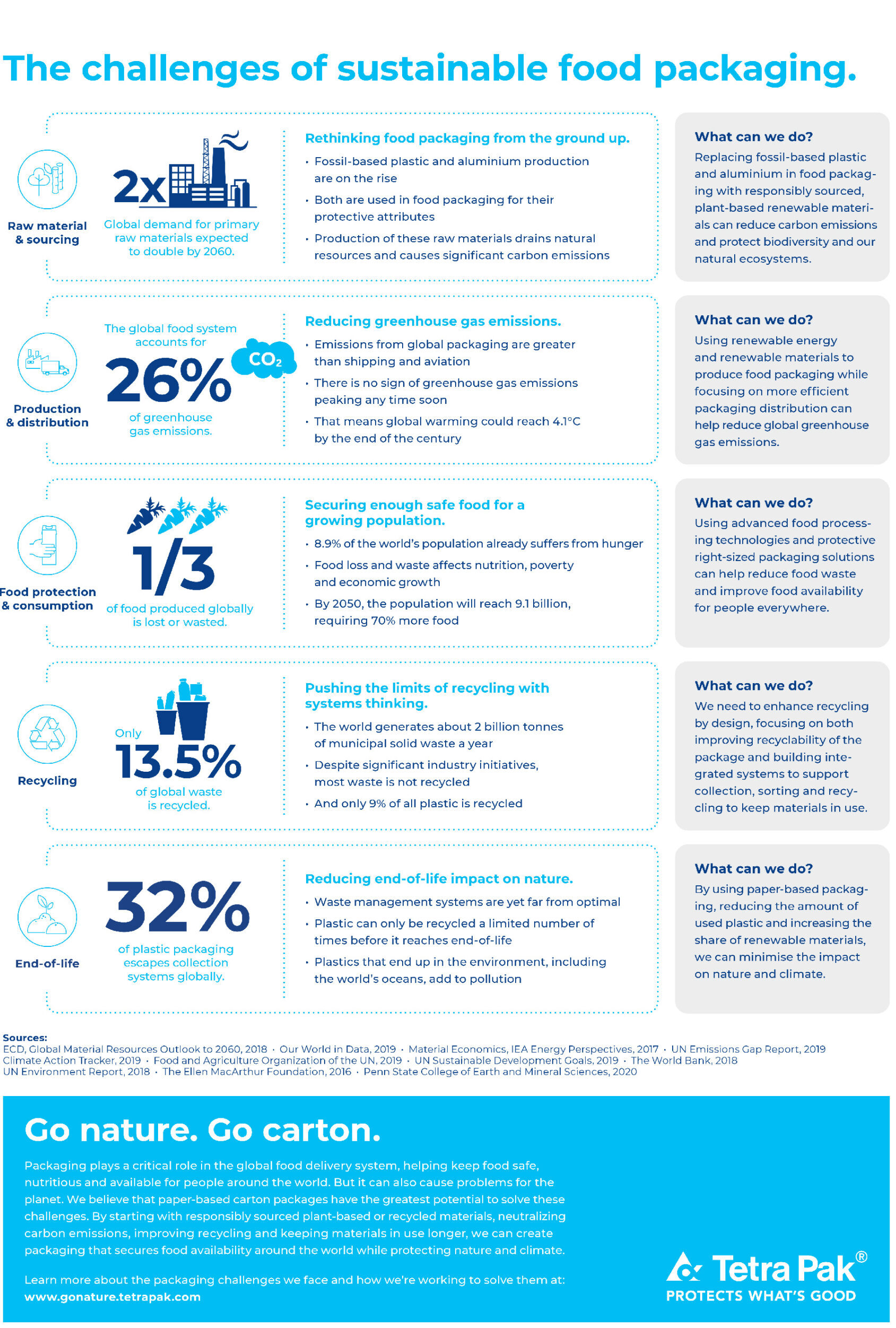“In this video, you will find interviews with Tetra Pak’s Global Leadership Team, illustrating how the food sector can play a major role in combating climate change. To accelerate food packaging’s sustainability transformation, the authors propose accelerating decarbonization and collaboration across the industry – addressing complex and multifaceted challenges such as global warming, circularity, and biodiversity.”
Text & Video : (Tetra Pak, The 50 Sustainability and Climate Leaders project, 2020)
Go Nature. Go Carton.
Despite its importance, the issue of food is often overlooked when discussing climate change. Globally, the food system produces 26% of greenhouse gas (GHG) emissions (Food production is responsible for one-quarter of the world’s greenhouse gas emissions, Hannah Ritchi, 2019), while food waste accounts for 8%(UN FAO, Food wastage footprint & climate change, 2015). The fact that food waste contributes to global emissions in this way makes it the world’s third-largest producer. As a result of the COVID-19 pandemic, the food system has exposed severe weaknesses that will only be exacerbated by the expected rise of the global population to 9.1 billion by 2050 (2050: A third more mouths to feed, 2009).
Using renewable materials as much as possible, and sourcing them responsibly in a way that maintains the biodiversity of our planet is important. Optimize both its own carbon footprint as well as the environmental impact of its value chain by, for example, accelerating the transition to renewable power and investing in new technologies and packaging solutions that produce less carbon dioxide in the process.
In addition to providing greater access to safe food and reducing the amount of food that is wasted, Tetra Pak, was one of the companies that introduced aseptic filling to the food industry in the 1950s, enabling the products to be distributed and stored without requiring refrigeration.
Improving the development of sustainable recycling value chains through an active agenda.


